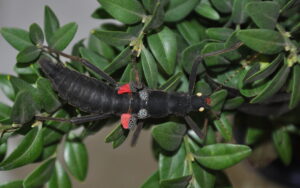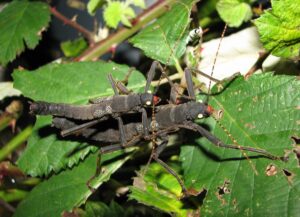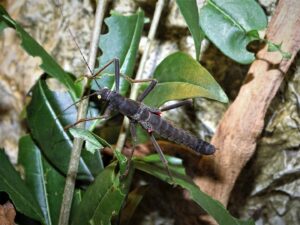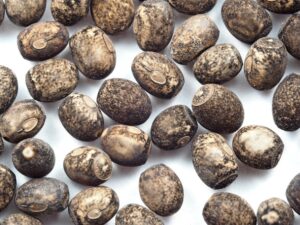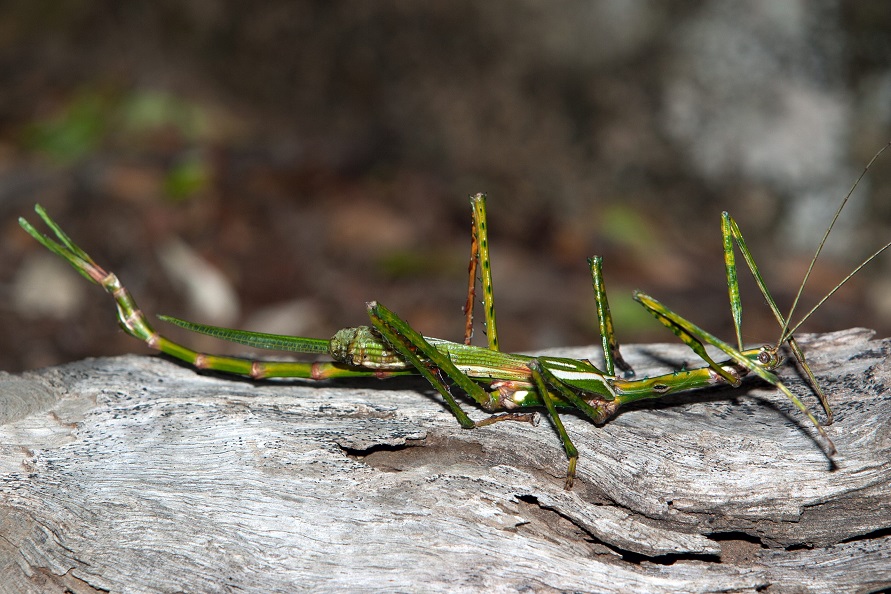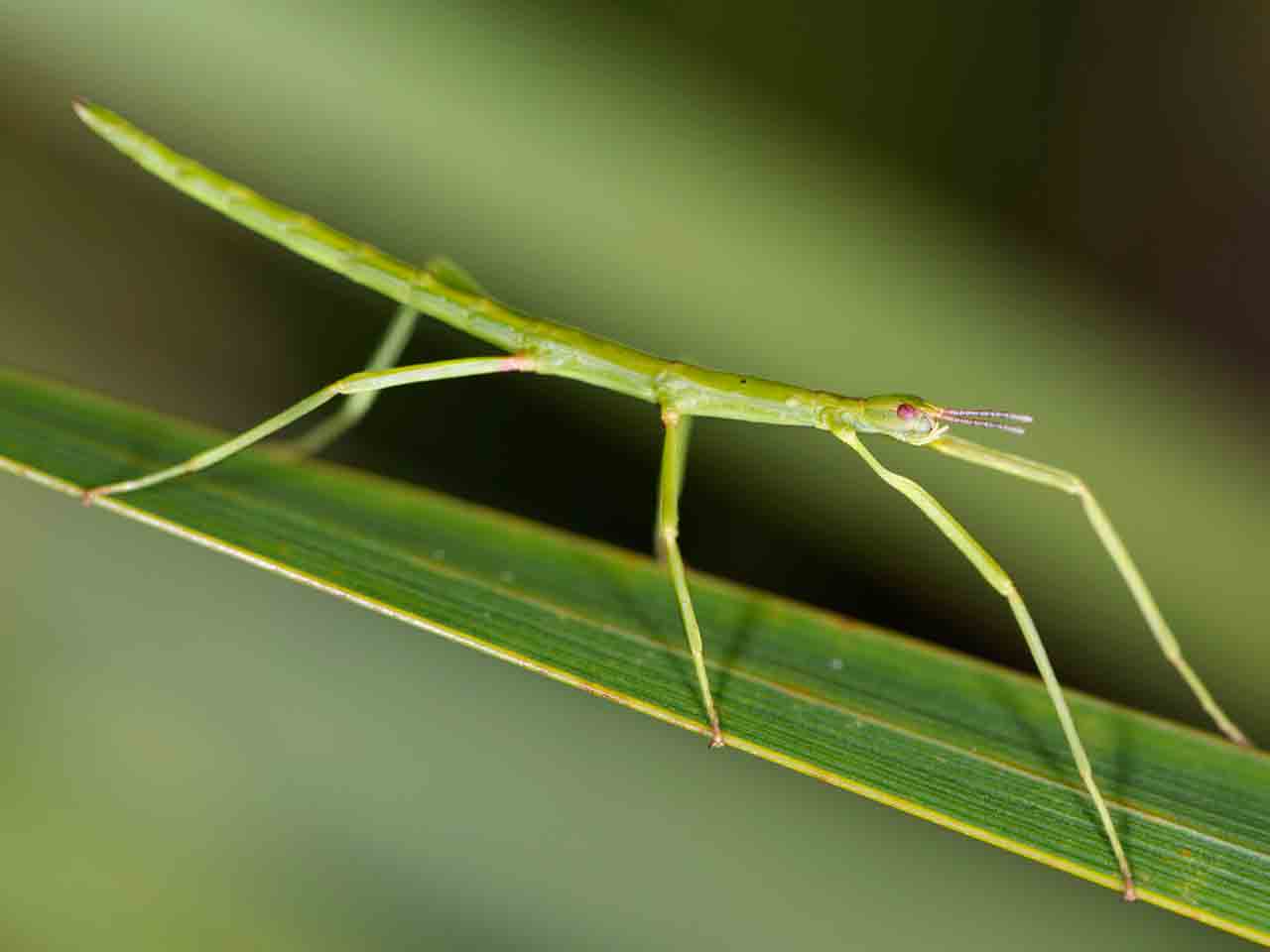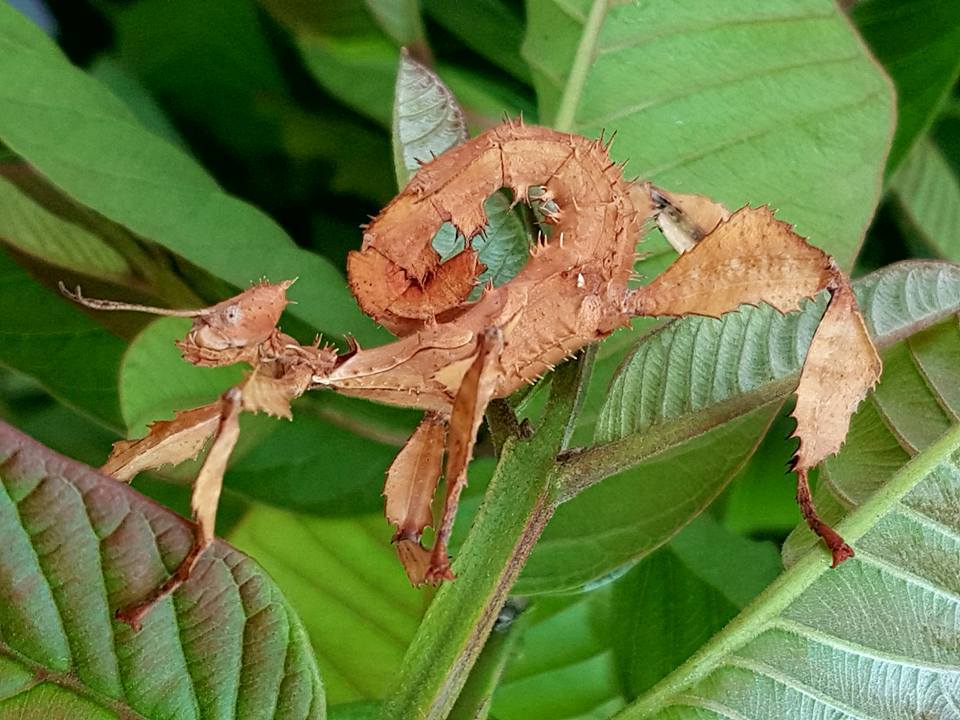Black Beauty Stick Insect (Peruphasma schultei)
Updated on
26/11/2022The black beauty stick insect is a beautiful species living in Peru. Due to its small range, it faced extinction, but nowadays, a suitable population lives in captivity.
Scientific Classification
- Class:Insecta
- Order:Phasmatodea
- Family:Pseudophasmatidae
- Genus: Peruphasma
- Species:P. schultei
Conservation Status
Description
Females (2.2 inches) are larger than males (1.49-1.7 inches). They have a unique appearance: a black body, golden eyes, and reddish-brown mouthparts. Adults have bright red wings; however, they are vestigial and cannot help in flight.
Other Common Names: Golden-Eyed Stick Insect
Distribution: Cordillera del Condor region of northern Peru
Habitat: Grasslands, pasturelands, some forests, mountains, and volcanoes
Do they bite: No
Lifespan: Around a year
Predator: Birds, reptiles, rodents
Behavior and Characteristics
Feeding
The diet of a black beauty stick insect in the wild consists of various species of pepper trees.
Defensive
When approached, the adults spray a defensive liquid from glands behind their heads which acts as an irritant to the eyes and skin.
Life Cycle
This species reaches sexual maturity at 4-5 months. Both sexual and asexual reproduction has been observed, the latter occurring via parthenogenesis.
1. Egg Stage
Females lay about 0.16-inch-long pale brown eggs with black mottling. The eggs incubate for 2-5 months.
2. Nymph Stage
The nymphs resemble adults, except they lack wings. They are nimble at this stage.
Pet Care Sheet
They are easy to handle and do not require much maintenance.
Enclosure: This should be three times the insect’s size.
Temperature: Room Temperature
Humidity: Misting is not required.
Feeding: Honeysuckle, privet, spotted laurel
Substrate: Damp tissue or vermiculite
Source
biolib.cz, earthlingnature.files.wordpress.com, rigazoo.lv, pbs.twimg.com




